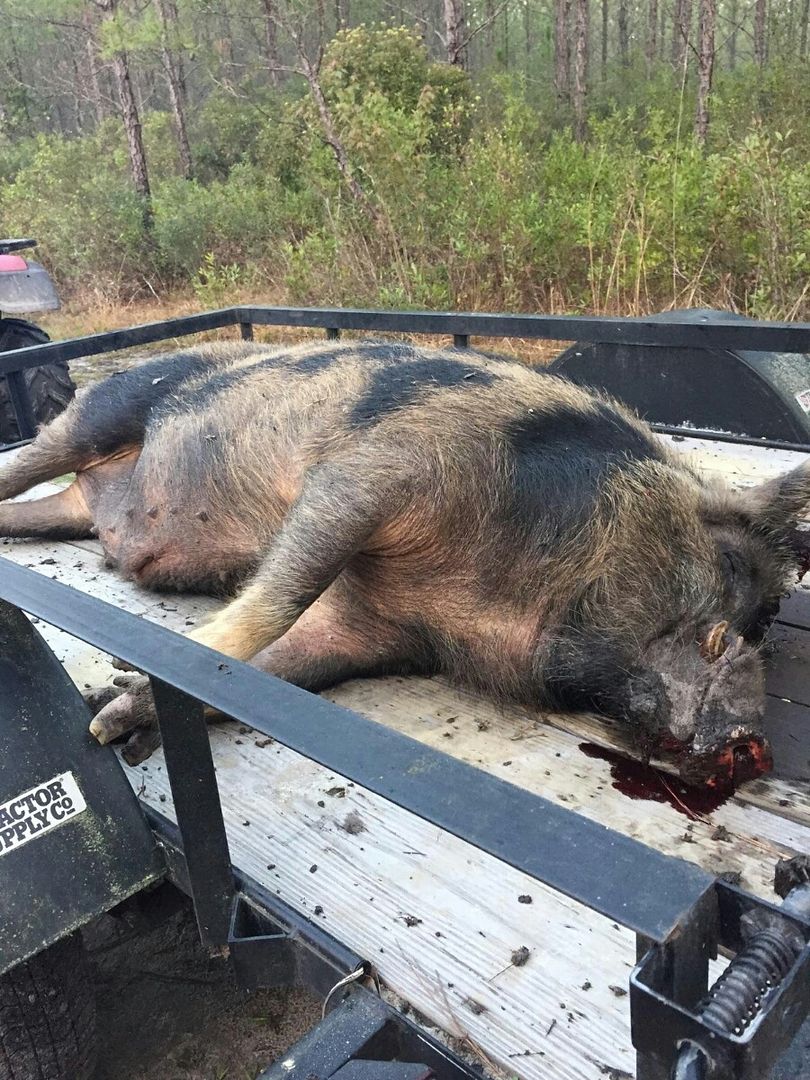Here is the synopsis of the shoot from our TNVC family shooter...
A photo of this Georgia pig was captured on one of our game cameras more than four years ago. From there, he became a "ghost", never to be seen again...until a fewmonths ago.
He started showing up at one of our feeders, with a group of about eight other pigs, but always at night. We spent the next several months trying to pattern his feed times but, they always varied by several hours. Although we sat waiting on several occasions, when ever could get him in front of our ground blind. About two weeks ago, he regularly started visiting the feeder between 2:30 and 3:00 am. The night he was taken was a no-moon evening and heavily overcast. He showed up slightly before 3:00 am and I used an M-24 Thermal to spot him from our ground blind approximately 100 yards away. When he presented the shot, I exited the blind and moved to within about 50 yards of him and illuminated him with a Torch Pro. The rifle was a Remington 700 LTR in .308, topped off with a D-790. A single, hand loaded,168gr BTHP hit him just behind the left shoulder, with the pig quartering away sharply. The bullet lodged in his head, after destroying the left lung and neck. It put him down immediately. After chambering another round, and watching the pig for about ten minutes, the rifle was shouldered and pistol drawn. After approaching with white light, I was shocked to seethe chest still heaving. This beast was still alive!!! A single 230gr hollowpoint to the neck, did nothing to stop the breathing. Two more rounds from the HK 45 Compact, just behind the ear, did the trick. What a resilient animal.
After cleaning him, and seeing the trauma in the neck,it was not surprising that the first .45 round to the neck had no effect. The .308 had already torn up most of the internal portion of the neck. Only the two shots to the brain stem were effective. One would have probably been sufficient but, there was no reason to see him suffer or, to take a chance with an animal this big and dangerous.
As it was impossible to lift this animal, I returned to camp to get the four-wheeler and attached a buddy's trailer to the back. With the ramp down, we were able to wrestle him into (and almost completely fill) the trailer. Our current camp scales were only 400 pound capable and, he bottomed them. By doing comparison with a picture of a 450 pound boar we killed last year, we were able to determine that this one was much, much larger.
He was at least 500 pounds! 
He was a Bar(a boar that had been trapped and cut, many years ago) which probably accounted for his tremendous size. It will probably stand as a record at our camp for many years to come. Hell, he's bigger than most of the
bears on our property! He definitely was the King of Woods. I am proud of the success and, he will be providing us with several hundred pounds of sausage for us to share with friends and family. Because he was a Bar, he had none of the tell-tale stench of a typical pig of this size. The meat was clean and covered with a thick layer of fat. We are definitely looking forward to getting this meat back from the processor.

Vic
 Win a FREE Membership!
Win a FREE Membership!